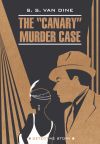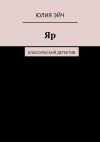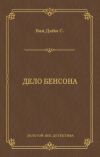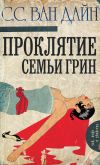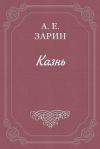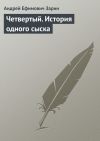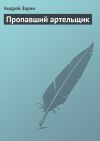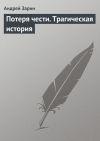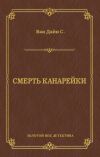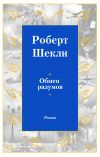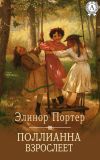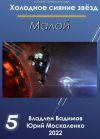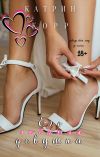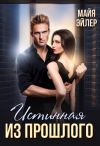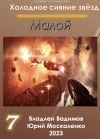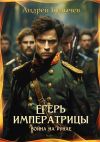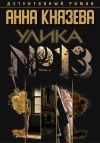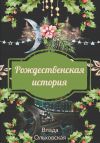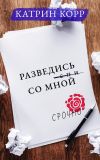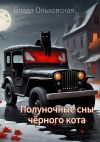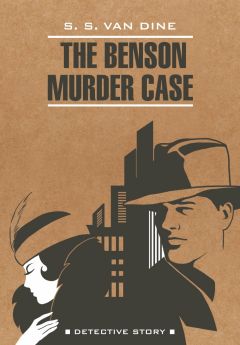
Автор книги: Стивен Ван Дайн
Жанр: Иностранные языки, Наука и Образование
Возрастные ограничения: +16
сообщить о неприемлемом содержимом
Текущая страница: 1 (всего у книги 18 страниц) [доступный отрывок для чтения: 5 страниц]
S. S. Van Dine / Стивен Ван Дайн
The Benson Murder Case / Дело Бенсона. Книга для чтения на английском языке
“Mr. Mason,” he said, “I wish to thank you for my life.”
“Sir,” said Mason, “I had no interest in your life. The adjustment of your problem was the only thing of interest to me.”
—Randolph Mason: Corrector of Destinies.
© КАРО, 2023
Все права защищены
Introductory
If you will refer to the municipal statistics of the City of New York, you will find that the number of unsolved major crimes during the four years that John F.-X. Markham was District Attorney, was far smaller than under any of his predecessors’ administrations. Markham projected the District Attorney’s office into all manner of criminal investigations; and, as a result, many abstruse crimes on which the Police had hopelessly gone aground were eventually disposed of.
But although he was personally credited with the many important indictments and subsequent convictions that he secured, the truth is that he was only an instrument in many of his most famous cases. The man who actually solved them and supplied the evidence for their prosecution, was in no way connected with the city’s administration, and never once came into the public eye.
At that time I happened to be both legal advisor and personal friend of this other man; and it was thus that the strange and amazing facts of the situation became known to me. But not until recently have I been at liberty to make them public. Even now I am not permitted to divulge the man’s name, and, for that reason, I have chosen, arbitrarily, to refer to him throughout these ex-officio[1]1
ex officio (лат.) – досл. в силу занимаемой должности; зд. официальный. – Здесь и далее комментарии на русском языке принадлежат редактору.
[Закрыть] reports as Philo Vance.
It is, of course, possible that some of his acquaintances may, through my revelations, be able to guess his identity; and if such should prove the case, I beg of them to guard that knowledge; for though he has now gone to Italy to live, and has given me permission to record the exploits of which he was the unique central character, he has very emphatically imposed his anonymity upon me; and I should not like to feel that, through any lack of discretion or delicacy, I have been the cause of his secret becoming generally known.
The present chronicle has to do with Vance’s solution of the notorious Benson murder which, due to the unexpectedness of the crime, the prominence of the persons involved, and the startling evidence adduced, was invested with an interest rarely surpassed in the annals of New York’s criminal history.
This sensational case was the first of many in which Vance figured as a kind of amicus curiae[2]2
amicus curiae (лат.) —юридический термин римского права, обозначающий лицо, содействующее суду
[Закрыть] in Markham’s investigations.
S. S. Van Dine.
New York.
Characters Of The Book
Philo Vance
John F.-X. Markham – District Attorney of New York County.
Alvin H. Benson – well-known Wall Street broker and man-about-town, who was mysteriously murdered in his home.
Major Anthony Benson – brother of the murdered man.
Mrs. Anna Platz – housekeeper for Alvin Benson.
Muriel St. Clair – a young singer.
Captain Philip Leacock – Miss St. Clair’s fiancé.
Leander Pfyfe – intimate friend of Alvin Benson’s.
Mrs. Paula Banning – a friend of Leander Pfyfe’s.
Elsie Hoffman – secretary of the firm of Benson and Benson.
Colonel Bigsby Ostrander – a retired army officer.
William H. Moriarty – an alderman, Borough of the Bronx.
Jack Prisco – elevator-boy at the Chatham Arms.
George G. Stitt – of the firm of Stitt and McCoy, Public Accountants.
Maurice Dinwiddie – Assistant District Attorney.
Chief Inspector O’Brien – of the Police Department of New York City.
William M. Moran – Commanding Officer of the Detective Bureau.
Ernest Heath – Sergeant of the Homicide Bureau.
Burke – Detective of the Homicide Bureau.
Snitkin – Detective of the Homicide Bureau.
Emery – Detective of the Homicide Bureau.
Ben Hanlon – Commanding Officer of Detectives assigned to District Attorney’s office.
Phelps – Detective assigned to District Attorney’s office.
Tracy – Detective assigned to District Attorney’s office.
Springer – Detective assigned to District Attorney’s office.
Higginbotham – Detective assigned to District Attorney’s office.
Captain Carl Hagedorn – fire-arms expert.
Dr. Doremus – Medical Examiner.
Francis Swacker – Secretary to the District Attorney.
Currie – Vance’s valet.
Chapter I. Philo Vance at Home
(Friday, June 14; 8.30 a.m.)
It happened that, on the morning of the momentous June the fourteenth when the discovery of the murdered body of Alvin H. Benson created a sensation which, to this day, has not entirely died away, I had breakfasted with Philo Vance in his apartment. It was not unusual for me to share Vance’s luncheons and dinners, but to have breakfast with him was something of an occasion. He was a late riser, and it was his habit to remain incommunicado[3]3
incommunicado англ. сленг от исп. incomunicado — лишенный общения, находящийся в полной изоляции
[Закрыть] until his midday meal.
The reason for this early meeting was a matter of business—or, rather, of aesthetics. On the afternoon of the previous day Vance had attended a preview of Vollard’s collection of Cézanne water-colors at the Kessler Galleries, and having seen several pictures he particularly wanted, he had invited me to an early breakfast to give me instructions regarding their purchase.
A word concerning my relationship with Vance is necessary to clarify my rôle[4]4
rôle (фр.) —роль, амплуа
[Закрыть] of narrator in this chronicle. The legal tradition is deeply imbedded in my family, and when my preparatory-school days were over, I was sent, almost as a matter of course, to Harvard to study law. It was there I met Vance, a reserved, cynical and caustic freshman who was the bane of his professors and the fear of his fellow-classmen. Why he should have chosen me, of all the students at the University, for his extra-scholastic association, I have never been able to understand fully. My own liking for Vance was simply explained: he fascinated and interested me, and supplied me with a novel kind of intellectual diversion. In his liking for me, however, no such basis of appeal was present. I was (and am now) a commonplace fellow, possessed of a conservative and rather conventional mind. But, at least, my mentality was not rigid, and the ponderosity of the legal procedure did not impress me greatly—which is why, no doubt, I had little taste for my inherited profession—; and it is possible that these traits found certain affinities in Vance’s unconscious mind. There is, to be sure, the less consoling explanation that I appealed to Vance as a kind of foil, or anchorage, and that he sensed in my nature a complementary antithesis to his own. But whatever the explanation, we were much together; and, as the years went by, that association ripened into an inseparable friendship.
Upon graduation I entered my father’s law firm—Van Dine and Davis—and after five years of dull apprenticeship I was taken into the firm as the junior partner. At present I am the second Van Dine of Van Dine, Davis and Van Dine, with offices at 120 Broadway. At about the time my name first appeared on the letter-heads of the firm, Vance returned from Europe, where he had been living during my legal novitiate, and, an aunt of his having died and made him her principal beneficiary, I was called upon to discharge the technical obligations involved in putting him in possession of his inherited property.
This work was the beginning of a new and somewhat unusual relationship between us. Vance had a strong distaste for any kind of business transaction, and in time I became the custodian of all his monetary interests and his agent at large. I found that his affairs were various enough to occupy as much of my time as I cared to give to legal matters, and as Vance was able to indulge the luxury of having a personal legal factotum, so to speak, I permanently closed my desk at the office, and devoted myself exclusively to his needs and whims.
If, up to the time when Vance summoned me to discuss the purchase of the Cézannes, I had harbored any secret or repressed regrets for having deprived the firm of Van Dine, Davis and Van Dine of my modest legal talents, they were permanently banished on that eventful morning; for, beginning with the notorious Benson murder, and extending over a period of nearly four years, it was my privilege to be a spectator of what I believe was the most amazing series of criminal cases that ever passed before the eyes of a young lawyer. Indeed, the grim dramas I witnessed during that period constitute one of the most astonishing secret documents in the police history of this country.
Of these dramas Vance was the central character. By an analytical and interpretative process which, as far as I know, has never before been applied to criminal activities, he succeeded in solving many of the important crimes on which both the police and the District Attorney’s office had hopelessly fallen down.
Due to my peculiar relations with Vance it happened that not only did I participate in all the cases with which he was connected, but I was also present at most of the informal discussions concerning them which took place between him and the District Attorney; and, being of methodical temperament, I kept a fairly complete record of them. In addition, I noted down (as accurately as memory permitted) Vance’s unique psychological methods of determining guilt, as he explained them from time to time. It is fortunate that I performed this gratuitous labor of accumulation and transcription, for now that circumstances have unexpectedly rendered possible my making the cases public, I am able to present them in full detail and with all their various side-lights and succeeding steps—a task that would be impossible were it not for my numerous clippings and adversaria[5]5
adversaria (лат.) pl. —адверсарии, у древних римлян книги с хозяйственными записями о делах и расходах; зд. записные книжки
[Закрыть].
Fortunately, too, the first case to draw Vance into its ramifications was that of Alvin Benson’s murder. Not only did it prove one of the most famous of New York’s causes célèbres[6]6
causes célèbres (фр.) pl. —знаменитости
[Закрыть], but it gave Vance an excellent opportunity of displaying his rare talents of deductive reasoning, and, by its nature and magnitude, aroused his interest in a branch of activity which heretofore had been alien to his temperamental promptings and habitual predilections.
The case intruded upon Vance’s life suddenly and unexpectedly, although he himself had, by a casual request made to the District Attorney over a month before, been the involuntary agent of this destruction of his normal routine. The thing, in fact, burst upon us before we had quite finished our breakfast on that mid-June morning, and put an end temporarily to all business connected with the purchase of the Cézanne paintings. When, later in the day, I visited the Kessler Galleries, two of the water-colors that Vance had particularly desired had been sold; and I am convinced that, despite his success in the unravelling of the Benson murder mystery and his saving of at least one innocent person from arrest, he has never to this day felt entirely compensated for the loss of those two little sketches on which he had set his heart.
As I was ushered into the living-room that morning by Currie, a rare old English servant who acted as Vance’s butler, valet, major-domo and, on occasions, specialty cook, Vance was sitting in a large armchair, attired in a surah silk dressing-gown and grey suede slippers, with Vollard’s book on Cézanne open across his knees.
“Forgive my not rising, Van,” he greeted me casually. “I have the whole weight of the modern evolution in art resting on my legs. Furthermore, this plebeian early rising fatigues me, y’ know.”
He riffled the pages of the volume, pausing here and there at a reproduction.
“This chap Vollard,” he remarked at length, “has been rather liberal with our art-fearing country. He has sent a really goodish collection of his Cézannes here. I viewed ’em yesterday with the proper reverence and, I might add, unconcern, for Kessler was watching me; and I’ve marked the ones I want you to buy for me as soon as the Gallery opens this morning.”
He handed me a small catalogue he had been using as a book-mark.
“A beastly assignment, I know,” he added, with an indolent smile. “These delicate little smudges with all their blank paper will prob’bly be meaningless to your legal mind—they’re so unlike a neatly-typed brief, don’t y’ know. And you’ll no doubt think some of ’em are hung upside-down,—one of ’em is, in fact, and even Kessler doesn’t know it. But don’t fret, Van old dear. They’re very beautiful and valuable little knickknacks, and rather inexpensive when one considers what they’ll be bringing in a few years. Really an excellent investment for some money-loving soul, y’ know—inf’nitely better than that Lawyer’s Equity Stock over which you grew so eloquent at the time of my dear Aunt Agatha’s death.”[7]7
As a matter of fact, the same water-colors that Vance obtained for $250 and $300, were bringing three times as much four years later. —Здесь и далее примечания на английском языке принадлежат автору. – Ред.
[Закрыть]
Vance’s one passion (if a purely intellectual enthusiasm may be called a passion) was art—not art in its narrow, personal aspects, but in its broader, more universal significance. And art was not only his dominating interest, but his chief diversion. He was something of an authority on Japanese and Chinese prints; he knew tapestries and ceramics; and once I heard him give an impromptu causerie[8]8
causerie (фр.) —беседа
[Закрыть] to a few guests on Tanagra figurines, which, had it been transcribed, would have made a most delightful and instructive monograph.
Vance had sufficient means to indulge his instinct for collecting, and possessed a fine assortment of pictures and objets d’art[9]9
objets d’art (фр.) pl. —предметы искусства
[Закрыть]. His collection was heterogeneous only in its superficial characteristics: every piece he owned embodied some principle of form or line that related it to all the others. One who knew art could feel the unity and consistency in all the items with which he surrounded himself, however widely separated they were in point of time or métier[10]10
métier (фр.) —ремесло, работа
[Закрыть] or surface appeal. Vance, I have always felt, was one of those rare human beings, a collector with a definite philosophic point of view.
His apartment in East Thirty-eighth Street—actually the two top floors of an old mansion, beautifully remodelled and in part rebuilt to secure spacious rooms and lofty ceilings—was filled, but not crowded, with rare specimens of oriental and occidental, ancient and modern, art. His paintings ranged from the Italian primitives to Cézanne and Matisse; and among his collection of original drawings were works as widely separated as those of Michelangelo and Picasso. Vance’s Chinese prints constituted one of the finest private collections in this country. They included beautiful examples of the work of Ririomin, Rianchu, Jinkomin, Kakei and Mokkei.
“The Chinese,” Vance once said to me, “are the truly great artists of the East. They were the men whose work expressed most intensely a broad philosophic spirit. By contrast the Japanese were superficial. It’s a long step between the little more than decorative souci[11]11
souci (фр.) – зд. обеспокоенность, забота
[Закрыть] of a Hokusai and the profoundly thoughtful and conscious artistry of a Ririomin. Even when Chinese art degenerated under the Manchus, we find in it a deep philosophic quality—a spiritual sensibilité[12]12
sensibilité (фр.) —чувствительность
[Закрыть], so to speak. And in the modern copies of copies—what is called the bunjinga[13]13
bunjinga —бундзинга, «живопись ученых» – крупная японская школа живописи тушью и водяными красками на шелке, зародилась в XVII веке.
[Закрыть] style—we still have pictures of profound meaning.”
Vance’s catholicity of taste in art was remarkable. His collection was as varied as that of a museum. It embraced a black-figured amphora by Amasis, a proto-Corinthian vase in the Aegean style, Koubatcha and Rhodian plates, Athenian pottery, a sixteenth-century Italian holy-water stoup of rock crystal, pewter of the Tudor period (several pieces bearing the double-rose hall-mark), a bronze plaque by Cellini, a triptych of Limoges enamel, a Spanish retable of an altar-piece by Vallfogona, several Etruscan bronzes, an Indian Greco Buddhist, a statuette of the Goddess Kuan Yin from the Ming Dynasty, a number of very fine Renaissance wood-cuts, and several specimens of Byzantine, Carolingian and early French ivory carvings.
His Egyptian treasures included a gold jug from Zakazik, a statuette of the Lady Nai (as lovely as the one in the Louvre), two beautifully carved steles of the First Theban Age, various small sculptures comprising rare representations of Hapi and Amset, and several Arrentine bowls carved with Kalathiskos dancers. On top of one of his embayed Jacobean book cases in the library, where most of his modern paintings and drawings were hung, was a fascinating group of African sculpture—ceremonial masks and statuette-fetishes from French Guinea, the Sudan, Nigeria, the Ivory Coast, and the Congo.
A definite purpose has animated me in speaking at such length about Vance’s art instinct, for, in order to understand fully the melodramatic adventures which began for him on that June morning, one must have a general idea of the man’s penchants[14]14
penchants (фр.) pl. —склонности, влечения
[Закрыть] and inner promptings. His interest in art was an important—one might almost say the dominant—factor in his personality. I have never met a man quite like him—a man so apparently diversified, and yet so fundamentally consistent.
Vance was what many would call a dilettante. But the designation does him injustice. He was a man of unusual culture and brilliance. An aristocrat by birth and instinct, he held himself severely aloof from the common world of men. In his manner there was an indefinable contempt for inferiority of all kinds. The great majority of those with whom he came in contact regarded him as a snob. Yet there was in his condescension and disdain no trace of spuriousness. His snobbishness was intellectual as well as social. He detested stupidity even more, I believe, than he did vulgarity or bad taste. I have heard him on several occasions quote Fouché’s famous line: C’est plus qu’un crime; c’est une faute[15]15
C’est plus qu’un crime; c’est une faute (фр.). —Это хуже, чем преступление, это ошибка. – Фраза приписывается французскому политику Жозефу Фуше (1759–1820) о казни герцога Энгиенского, которая повлекла за собой создание антифранцузской коалиции в англо-французской войне 1803–1814 гг.
[Закрыть]. And he meant it literally.
Vance was frankly a cynic, but he was rarely bitter: his was a flippant, Juvenalian cynicism. Perhaps he may best be described as a bored and supercilious, but highly conscious and penetrating, spectator of life. He was keenly interested in all human reactions; but it was the interest of the scientist, not the humanitarian. Withal he was a man of rare personal charm. Even people who found it difficult to admire him, found it equally difficult not to like him. His somewhat quixotic mannerisms and his slightly English accent and inflection—a heritage of his post-graduate days at Oxford—impressed those who did not know him well, as affectations. But the truth is, there was very little of the poseur[16]16
poseur (фр.) —позер, гордец, притворщик
[Закрыть] about him.
He was unusually good-looking, although his mouth was ascetic and cruel, like the mouths on some of the Medici portraits[17]17
I am thinking particularly of Bronzino’s portraits of Pietro de’ Medici and Cosimo de’ Medici, in the National Gallery, and of Vasari’s medallion portrait of Lorenzo de’ Medici in the Vecchio Palazzo, Florence.
[Закрыть]; moreover, there was a slightly derisive hauteur in the lift of his eyebrows. Despite the aquiline severity of his lineaments his face was highly sensitive. His forehead was full and sloping—it was the artist’s, rather than the scholar’s, brow. His cold grey eyes were widely spaced. His nose was straight and slender, and his chin narrow but prominent, with an unusually deep cleft. When I saw John Barrymore recently in Hamlet[18]18
Hamlet – «Гамлет», трагедия У. Шекспира.
[Закрыть] I was somehow reminded of Vance; and once before, in a scene of Caesar and Cleopatra[19]19
Caesar and Cleopatra – «Цезарь и Клеопатра», пьеса Б. Шоу.
[Закрыть] played by Forbes-Robertson, I received a similar impression.[20]20
Once when Vance was suffering from sinusitis, he had an X-ray photograph of his head made; and the accompanying chart described him as a “marked dolichocephalic” and a “disharmonious Nordic.” It also contained the following data:—cephalic index 75; nose, leptorhine, with an index of 48; facial angle, 85°; vertical index, 72; upper facial index, 54; interpupilary width, 67; chin, masognathous, with an index of 103; sella turcica, abnormally large.
[Закрыть]
Vance was slightly under six feet, graceful, and giving the impression of sinewy strength and nervous endurance. He was an expert fencer, and had been the Captain of the University’s fencing team. He was mildly fond of outdoor sports, and had a knack of doings things well without any extensive practice. His golf handicap was only three; and one season he had played on our championship polo team against England. Nevertheless, he had a positive antipathy to walking, and would not go a hundred yards on foot if there was any possible means of riding.
In his dress he was always fashionable—scrupulously correct to the smallest detail—yet unobtrusive. He spent considerable time at his clubs: his favorite was the Stuyvesant, because, as he explained to me, its membership was drawn largely from the political and commercial ranks, and he was never drawn into a discussion which required any mental effort. He went occasionally to the more modern operas, and was a regular subscriber to the symphony concerts and chamber-music recitals.
Incidentally, he was one of the most unerring poker players I have ever seen. I mention this fact not merely because it was unusual and significant that a man of Vance’s type should have preferred so democratic a game to bridge or chess, for instance, but because his knowledge of the science of human psychology involved in poker had an intimate bearing on the chronicles I am about to set down.
Vance’s knowledge of psychology was indeed uncanny. He was gifted with an instinctively accurate judgment of people, and his study and reading had co-ordinated and rationalized this gift to an amazing extent. He was well grounded in the academic principles of psychology, and all his courses at college had either centered about this subject or been subordinated to it. While I was confining myself to a restricted area of torts and contracts, constitutional and common law, equity, evidence and pleading, Vance was reconnoitring the whole field of cultural endeavor. He had courses in the history of religions, the Greek classics, biology, civics and political economy, philosophy, anthropology, literature, theoretical and experimental psychology, and ancient and modern languages.[21]21
“Culture,” Vance said to me shortly after I had met him, “is polyglot; and the knowledge of many tongues is essential to an understanding of the world’s intellectual and aesthetic achievements. Especially are the Greek and Latin classics vitiated by translation.” I quote the remark here because his omnivorous reading in languages other than English, coupled with his amazingly retentive memory, had a tendency to affect his own speech. And while it may appear to some that his speech was at times pedantic, I have tried, throughout these chronicles to quote him literally, in the hope of presenting a portrait of the man as he was.
[Закрыть] But it was, I think, his courses under Münsterberg and William James that interested him the most.
Vance’s mind was basically philosophical—that is, philosophical in the more general sense. Being singularly free from the conventional sentimentalities and current superstitions, he could look beneath the surface of human acts into actuating impulses and motives. Moreover, he was resolute both in his avoidance of any attitude that savored of credulousness, and in his adherence to cold, logical exactness in his mental processes.
“Until we can approach all human problems,” he once remarked, “with the clinical aloofness and cynical contempt of a doctor examining a guinea-pig strapped to a board, we have little chance of getting at the truth.”
Vance led an active, but by no means animated, social life—a concession to various family ties. But he was not a social animal.—I can not remember ever having met a man with so undeveloped a gregarious instinct,—and when he went forth into the social world it was generally under compulsion. In fact, one of his “duty” affairs had occupied him on the night before that memorable June breakfast; otherwise, we would have consulted about the Cézannes the evening before; and Vance groused a good deal about it while Currie was serving our strawberries and eggs Bénédictine[22]22
eggs Bénédictine —яйца Бенедикт, блюдо на завтрак, представляющее собой бутерброд из двух половинок булочки с яйцами пашот, ветчиной и голландским соусом
[Закрыть]. Later on I was to give profound thanks to the God of Coincidence that the blocks had been arranged in just that pattern; for had Vance been slumbering peacefully at nine o’clock when the District Attorney called, I would probably have missed four of the most interesting and exciting years of my life; and many of New York’s shrewdest and most desperate criminals might still be at large.
Vance and I had just settled back in our chairs for our second cup of coffee and a cigarette when Currie, answering an impetuous ringing of the front-door bell, ushered the District Attorney into the living-room.
“By all that’s holy!” he exclaimed, raising his hands in mock astonishment. “New York’s leading flâneur[23]23
flâneur (фр.) —фланер, бродяга, скиталец
[Закрыть] and art connoisseur is up and about!”
“And I am suffused with blushes at the disgrace of it,” Vance replied.
It was evident, however, that the District Attorney was not in a jovial mood. His face suddenly sobered.
“Vance, a serious thing has brought me here. I’m in a great hurry, and merely dropped by to keep my promise. … The fact is, Alvin Benson has been murdered.”
Vance lifted his eyebrows languidly.
“Really, now,” he drawled. “How messy! But he no doubt deserved it. In any event, that’s no reason why you should repine. Take a chair and have a cup of Currie’s incomp’rable coffee.” And before the other could protest, he rose and pushed a bell-button.
Markham hesitated a second or two.
“Oh, well. A couple of minutes won’t make any difference. But only a gulp.” And he sank into a chair facing us.
